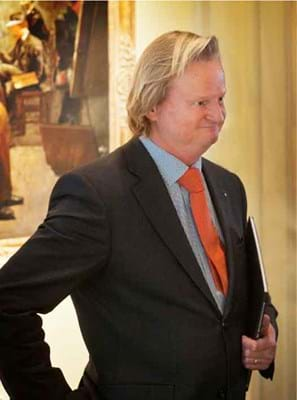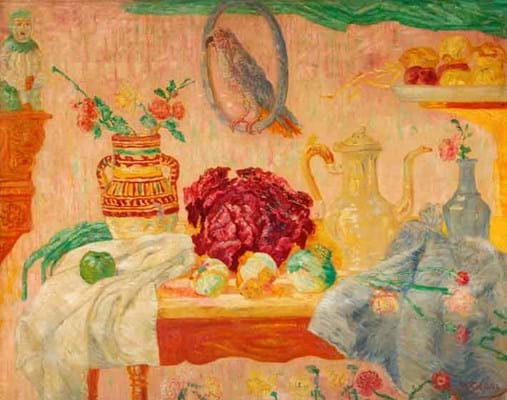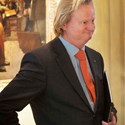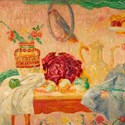ATG: How long have you been a BRAFA exhibitor and what makes it a good choice of fair for you as an exhibitor?
FM: I have been exhibiting for 12 years now in what has always been the best fair in Belgium. The Belgian Antiques Fair that used to take place at the Palais des Beaux-Arts united at that time the best dealers from the Flemish- and French-speaking part of Belgium with an emphasis on Ghent, Antwerp, Brussels and Liège.
It was, at that time, the only antiques fair in Belgium that was followed by the international trade and press and as a consequence gave the best exposure.
ATG: What do you think have been the most noticeable changes to the BRAFA since you first started exhibiting?
FM: What started as a convivial Belgian happening changed rather quickly into a fully awarded international event. The move to the new premises of Tour & Taxis gave us more space and flexibility and also the possibility to enlarge and 'internationalise' the scale of the fair. The professionalism of the organisation also moved towards a higher degree.
ATG: Have you changed the type of works that you exhibit at BRAFA since it moved to Tour & Taxis and, if so, what is your emphasis now? Have you noticed any general changes in the type of material shown at the fair among other exhibitors?
FM: I think that everybody involved with arts and antiques for more than ten years has noticed the same changes in the market. The globalisation and growing professionalism of the art market forced us all into a new way of practising the metier.
Quality is the only important standard for everybody and all disciplines, be it paintings, ceramics, tribal art or silver - this is reflected in BRAFA's ethos. The interesting aspect about that is the meeting of different sorts of arts from different countries and periods. I mainly deal with Belgian Art 1830-1950 and I realise that at a certain level the quality becomes universal and that it stands the comparison with other artists or schools worldwide.
ATG: How would you describe the visitor profile at BRAFA and how has it changed over the years?
FM: One often hears the remark that the big art fairs are becoming too predictable, showing the same sort of artists, movements or styles - reflecting the actual demands. BRAFA is different because of its perfect mixture between tradition and innovation: young and entrepreneurial dealers together with long-established serious houses. The visitor profile shows the same diversity, a good mixture of international experienced collectors and a young, unconditioned public eager to learn.
ATG: Do you exhibit at any other fairs, either in Belgium or overseas?
FM: I have been participating for years at PAN-Amsterdam. No overseas experiences so far.
ATG: Now that BRAFA has reached its 60th anniversary, what do you think will be the main challenges for the fair in the future? Are there any changes/innovations you would like to see?
FM: The main challenge will be to maintain and continue to improve the quality of exhibitors and visitors, of course. We would like to 'internationalise' the fair even more by attracting good dealers from the UK, Germany, Austria, Italy, Spain, Holland and other overseas countries. We can only achieve that goal by continuing to provide a good service for the exhibitor as well as the visitor.
ATG: Do you have a favourite piece that you are taking to the fair and what makes it special?
FM: The painting by James Ensor, Still-Life with vegetables and parrot, oil on canvas, 2ft 7in x 3ft 3in (80cm x 1m) - pictured below - is a wonderful example of the underlying duality in the work of the Ostend painter. A perfectly balanced composition and a freshness of colour and light shows Ensor at his best. The painting has been in a private collection since 1960 and is appearing for the first time on the market.









